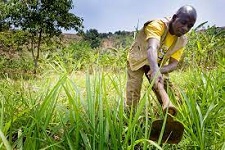Industries across the board are increasingly taking a data-driven approach to drive efficiency and proactivity.
With the proliferation of affordable monitoring devices and connectivity, they are using this data to enhance decision-making and overall operations. According to Priaash Ramadeen, CEO and co-founder of The Awareness Company, this presents an opportunity for the agricultural sector to embrace data for precision farming and farm security.
“I think that it is important that we first define what we mean with agricultural security and precision farming,” he says. “Agricultural security is about reducing loss of income and keeping your business and family safe. Precision farming focuses on reducing risk and maximizing quality and profit. But how will technology and data help you achieve those?”
The answer lies in awareness and visibility across the business – on the farm, in the pack house or processing plant and across your agricultural business right through to insurance continuously. It also allows you to share that visibility and awareness across the entire value chain, including farm workers, suppliers, and off-takers as well as the insurance companies involved with supplying inputs to the farm.
“Data also gives you a deeper understanding of what is going on, providing the farmer with the inputs required to understand their unique situations and challenges,” says Ramadeen. “It helps the farmer remove uncertainty by supplementing their gut and instinct with data-driven decision-making based on facts. It allows the farmer to enhance, elevate and grow their operations and results in far better decisions and ultimately actions.”
He adds that it improves the speed to act as well. “Through better awareness, the farmer can act immediately to rectify a situation and become more proactive, streamlining the farm operations. There are so many variables in farming, so it is imperative to use data to help shape, predict, and anticipate the future. It allows the farmer to compare historic yields to help understand what the next year’s crop should look like, understand when the next drought is likely to occur, whether crops are being overwatered and identify vulnerable access points to the farm that pose a security risk. It allows the farmer to analyze patterns and trends across the entire value chain.”
Ramadeen says that with the vast amounts of data that is available across the value chain, it is critical for the farm to have the right tools to aggregate and make sense of that data. “You need tools that are simple to use, and which can transform all those data points into actionable stories to support your decision-making process. That is why we created HYDRA as a data-agnostic solution, to collect data from sensors from different systems and aggregate it to provide agricultural security patterns and trends that give a historic view, which can then be used to reduce things like false detections and provide early threat warnings as well allowing for a more proactive approach to security,” he says.
From a precision farming perspective, the data allows the farm to save on costs and drive operational efficiency. “It allows the farmer to elevate and grow the business as well as automate reporting administration,” says Ramadeen. The data that is logged from devices across the farm is aggregated into one dashboard, which visualizes the information for easy interpretation. He adds that the data can also be shared among broader farming communities to improve overall security.
“It allows the community to be more aware and enables them to solve security breaches must faster. Artificial intelligence in cameras for example can analyze what type of movement triggered the alert and whether it is an actual threat or not, reducing unnecessary false alarms. The technology also allows for real-time tracking of animals on the farm, allowing for proactive management of the animals. It also allows for the monitoring of grazing patterns, movement, and other behaviors.” Then you can also monitor things that are on your farm, whether it’s the movement of people, equipment, or vehicles in real-time.
He recommends that farmers that want to capitalize on precision farming and agricultural security use several sources of data to get a holistic view of the entire farm. “Sensors are becoming smaller, smarter, and cheaper and connectivity is becoming more readily available. It, therefore, makes sense for farmers to deploy AgriTech solutions to give them in-depth insights into their operations in real-time. And with the global population rate of population growth, there is a lot of room for optimization, and this is where data will be key.”

